*This post may contain affiliate links. Read more »
Say “Hey there, I love ya” to Urap Sayur, a nourishing Indonesian dish. While the name translates to “mixed vegetables” in English, don’t be mistaken that this is some wack salad. This is a perfect mix of green goodness briefly sautéed in sambal, and topped with fragrant makrut lime and tamarind scented toasted coconut. Right? I told you this was dope, and my mama didn’t raise me to be a liar.
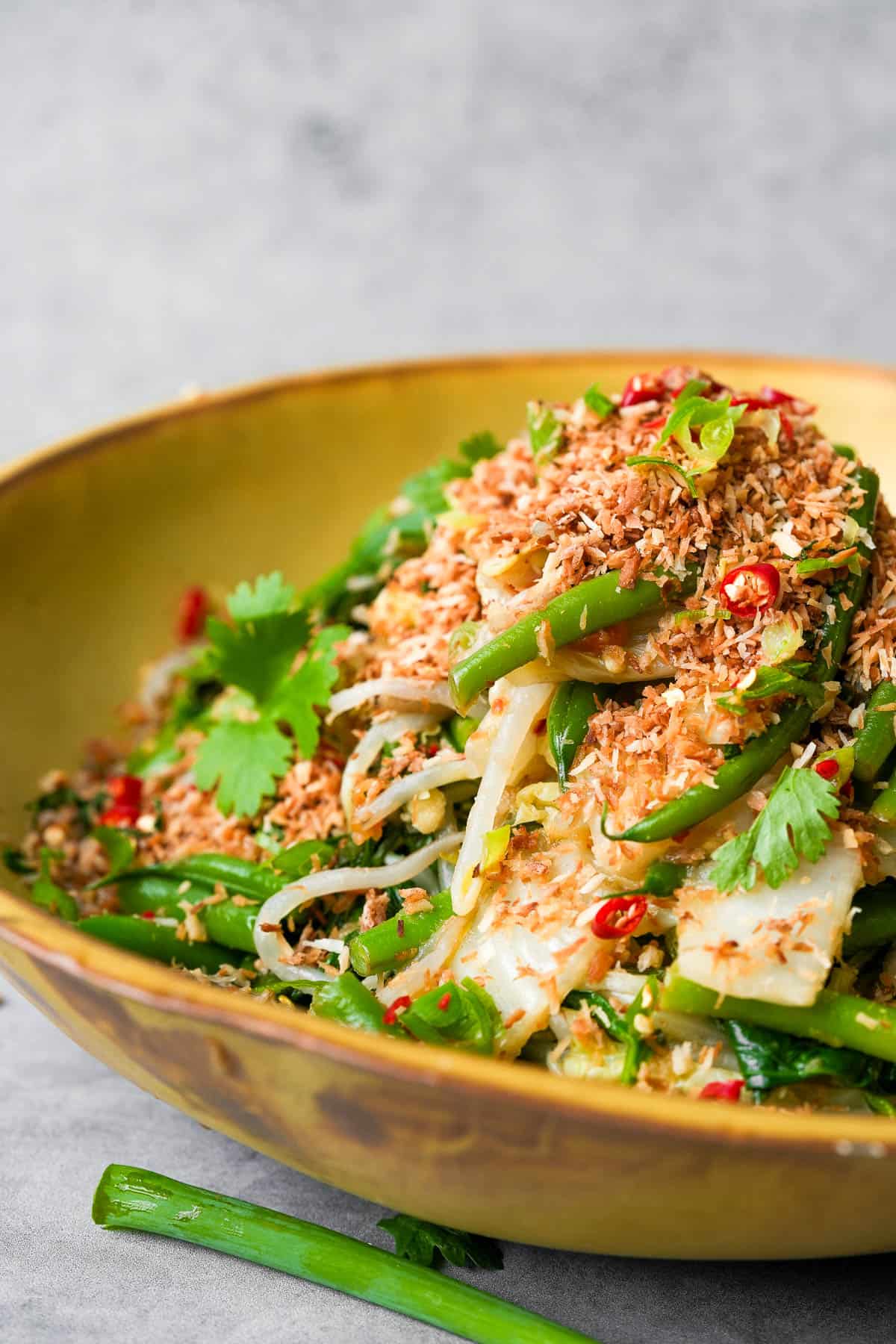

Enter your email & I'll send it to your inbox. Plus, get great new recipes from me every week!
By submitting this form, you consent to receive emails from Cinnamon Snail.
Create a slammin’ Balinese plant-based meal by serving sayur salad with bihun goreng, and tahu goreng, over some gorgeous turmeric rice with pickled green chilies.
Whether you’re a beginner, who just realized gado gado ain’t the only Indonesian salad out there, or an experienced cook seeking a new adventure, this Urap Sayur recipe has got you covered.
Tie on your cutest apron, grab your ingredients, and let’s dive into the world of Urap Sayur. Your kitchen is about to become a hub of aromatic spices and nutritious creations. Let’s get cooking!
Jump to:
🥰 Why you'll adore this. urap sayur recipe
✊ Vegan AF: Like all of my vegan Indonesian recipes, this traditional Balinese Urap Sayur (sometimes called urab sayur, or simply urap urap) recipe is vegan and gluten-free.
🥸 Fool-proof method: Mastering this Sayur salad on your first try is a breeze, with photographed steps and easy-to-follow instructions in this recipe!
✅ Tested and approved worldwide: Just like all of my vegan recipes, this Urap Sayur has been meticulously refined and rigorously tested by a global team of recipe testers, including some in Indonesia where the dish originates. No matter where you are, rest assured it’s a recipe that’s been fine-tuned for success.


Warning: This Will Transform Your Vegan Indo Cooking!
This 6-day plant-based deep dive into the vibrant cuisine of Indonesia is 100% FREE.
🥬 Urap sayur ingredients and substitutions
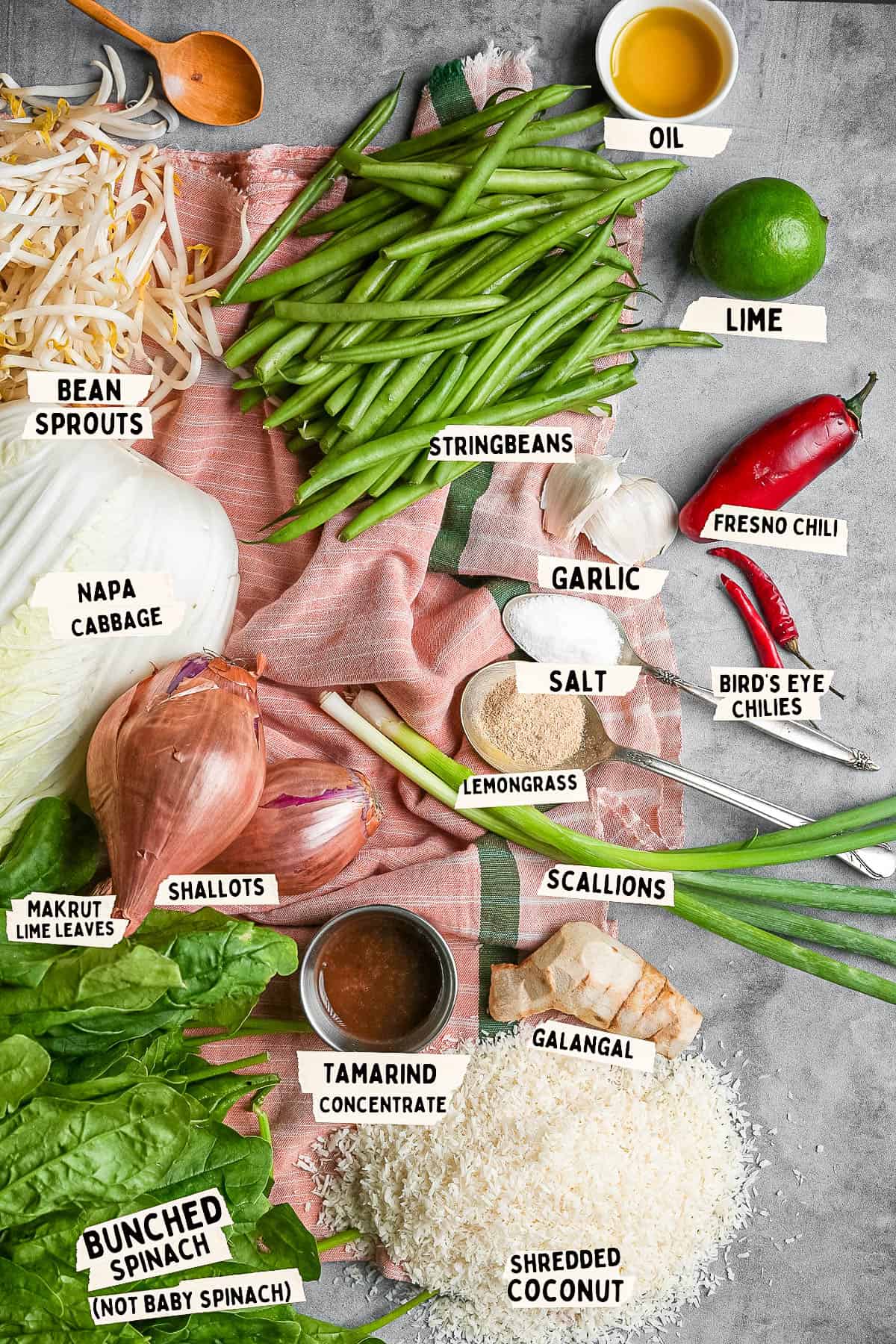
Grated Coconut
Fresh grated coconut, a staple in Indonesian cuisine (especially in treats like kuih dadar and putu ayu cakes), adds a great texture to this vegetable salad. You can use either fresh grated coconut or unsweetened desiccated coconut. If you hate coconut for some reason (I don’t get you, but it’s ok), use toasted nuts like almonds or cashews, briefly pulled in a food processor for a similar crunch. If you are a straight coconut freak, make sure to make some steamed coconut pandan cakes for dessert!
Makrut Lime Leaves
Makrut lime leaves are a hallmark of Indonesian cooking and infuse an irresistible citrusy aroma. Sambal goreng, which is somewhat of a national treasure in Indonesia, wouldn’t be the same without ‘em. Throughout the west these are called kaffir lime leaves, but that term is offensive in some places, so let’s stick with “makrut.” You should be able to find them in almost every country, either fresh, frozen or dried in Asian grocery stores.
Lemongrass Powder
Lemongrass powder introduces a burst of bright, lemony notes to the dish. The powder is a time-saver compared to fresh lemongrass, which is so fibrous, that it’s a bit of a pain to break down small enough to avoid little “hairs” being present in the food. I worked in a restaurant that used so much lemongrass that we powdered it in-house, and it killed more than one industrial grinder every year!
Galangal
Galangal, a cousin of ginger, contributes a warm, slightly peppery taste that complements the Urap Sayur sambal. It’s also the magical backbone to perfect homemade mee rebus! Ginger can step in as a substitute if you can’t find fresh or frozen galangal.
Tamarind Concentrate
Tamarind concentrate is the magical touch that imparts a sweet and sour note to dishes like banh trang tron and tom yum. With a pinch of salt, it’s almost tart cherry-like flavor transforms the toasted coconut topping on this dish into something indescribably yummers. You can make your own tamarind paste at home by mixing tamarind pulp in hot water to make a thick sauce. Otherwise, in a pinch, mix equal parts lemon juice and brown sugar as a substitute for tamarind concentrate.
*See the recipe card at the bottom of the page for exact quantities, nutritional info, and detailed cooking directions.
🤯Variations
- Swap out the tamarind in the spiced grated coconut topping for a couple of spoonfuls of homemade nuoc mam, combining spicy, sweet, savory, and tangy notes.
- Add some lontong, a traditional Indonesian rice cake, to make this into a more filling dish. Or level up the protein content by adding some seitan grilled in sticky gochujang BBQ sauce.
😻 How to make this urap sayur recipe
Nail this dish by following these step-by-step instructions with important tips. Or you can follow along with the easy-to-print recipe card towards the bottom of this page.
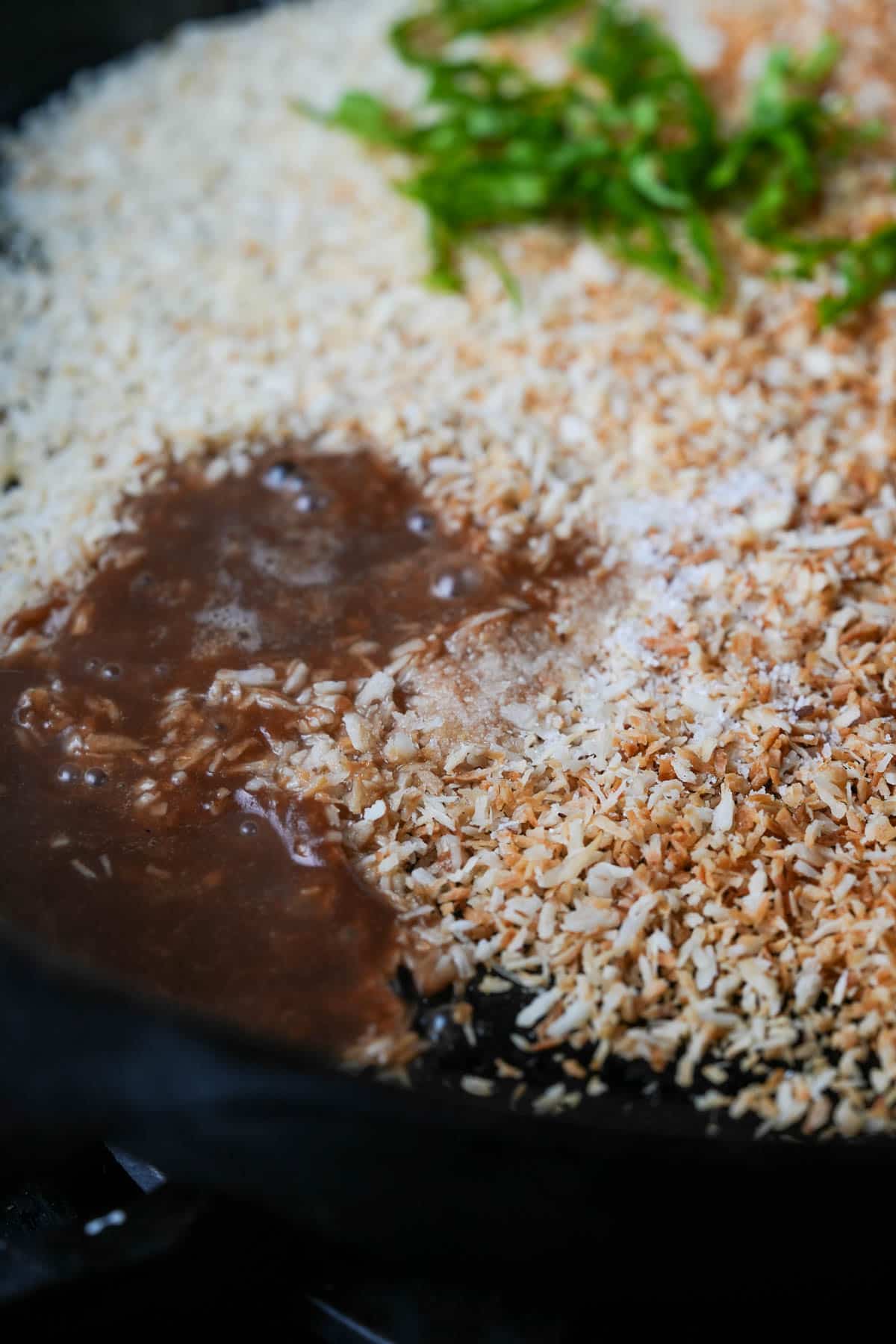
Step One
Place a sauté pan over medium heat. Toast the coconut until it turns lightly golden and releases a delightful fragrance. Add the thinly sliced makrut lime leaves, tamarind concentrate, and a pinch of salt. Sauté the mixture, stirring all the while until it becomes mostly dry. Set it aside to cool.
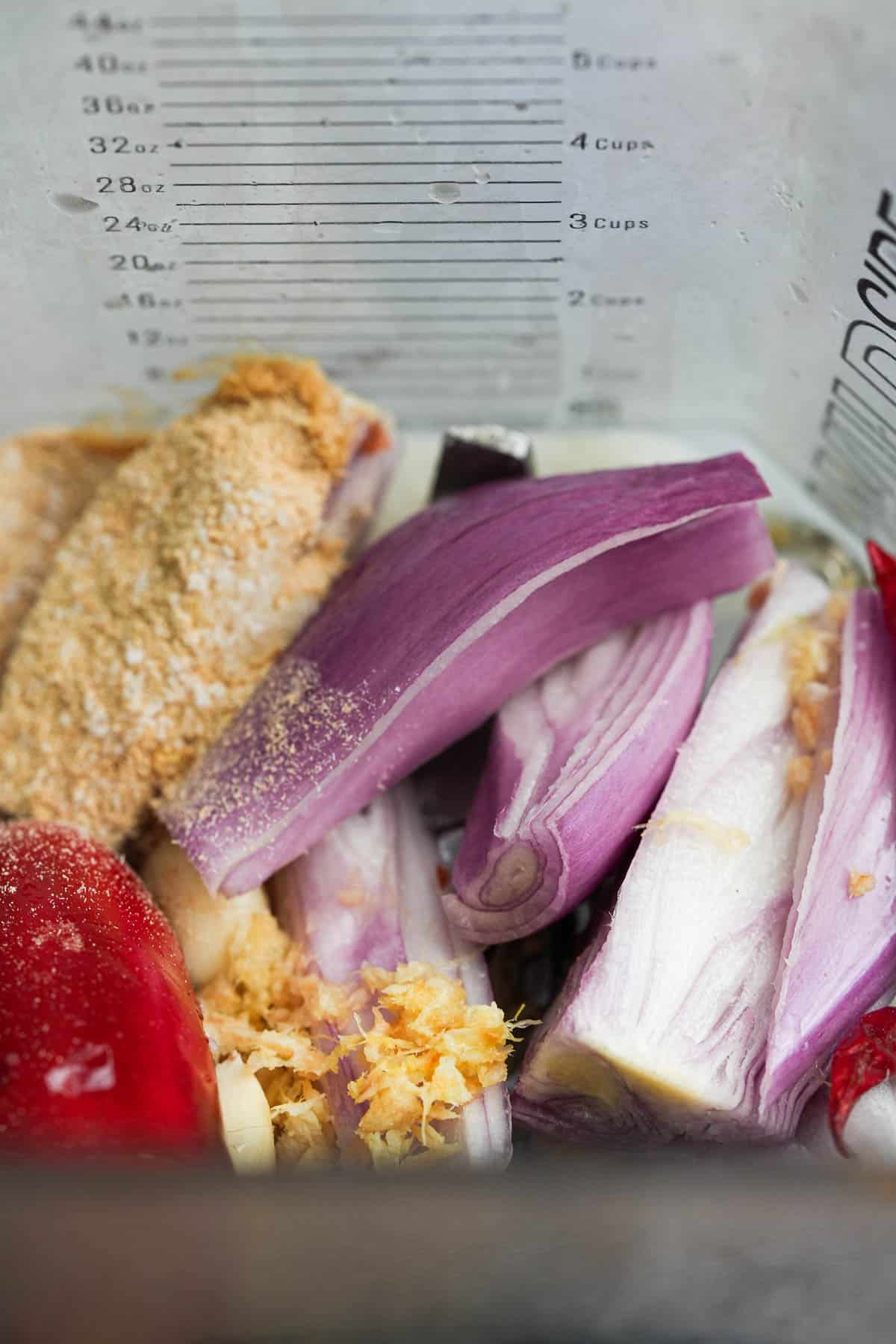
Step Two
Blend the bird’s eye chilies, Fresno chili, grated galangal, lemongrass powder, garlic, shallots, lime juice, and salt in a blender on high speed for 90 seconds until smooth.
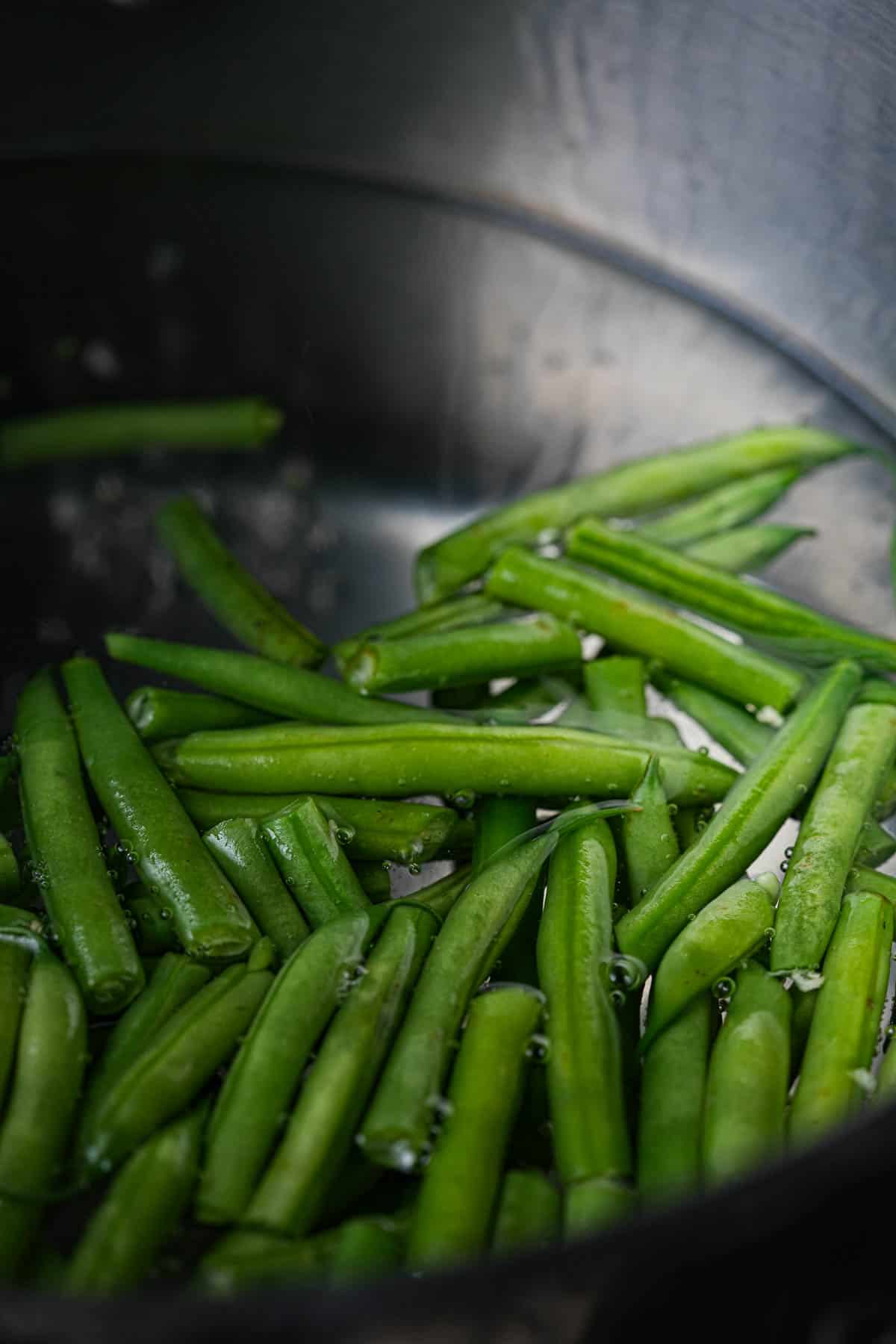
Step Three
Bring a pot of water to a rolling boil over high heat. Add the chopped green beans and let them cook for about 60 seconds.

Step Four
Add the chopped cabbage and mung bean sprouts. Let them blanch with the string beans for another 45 seconds.
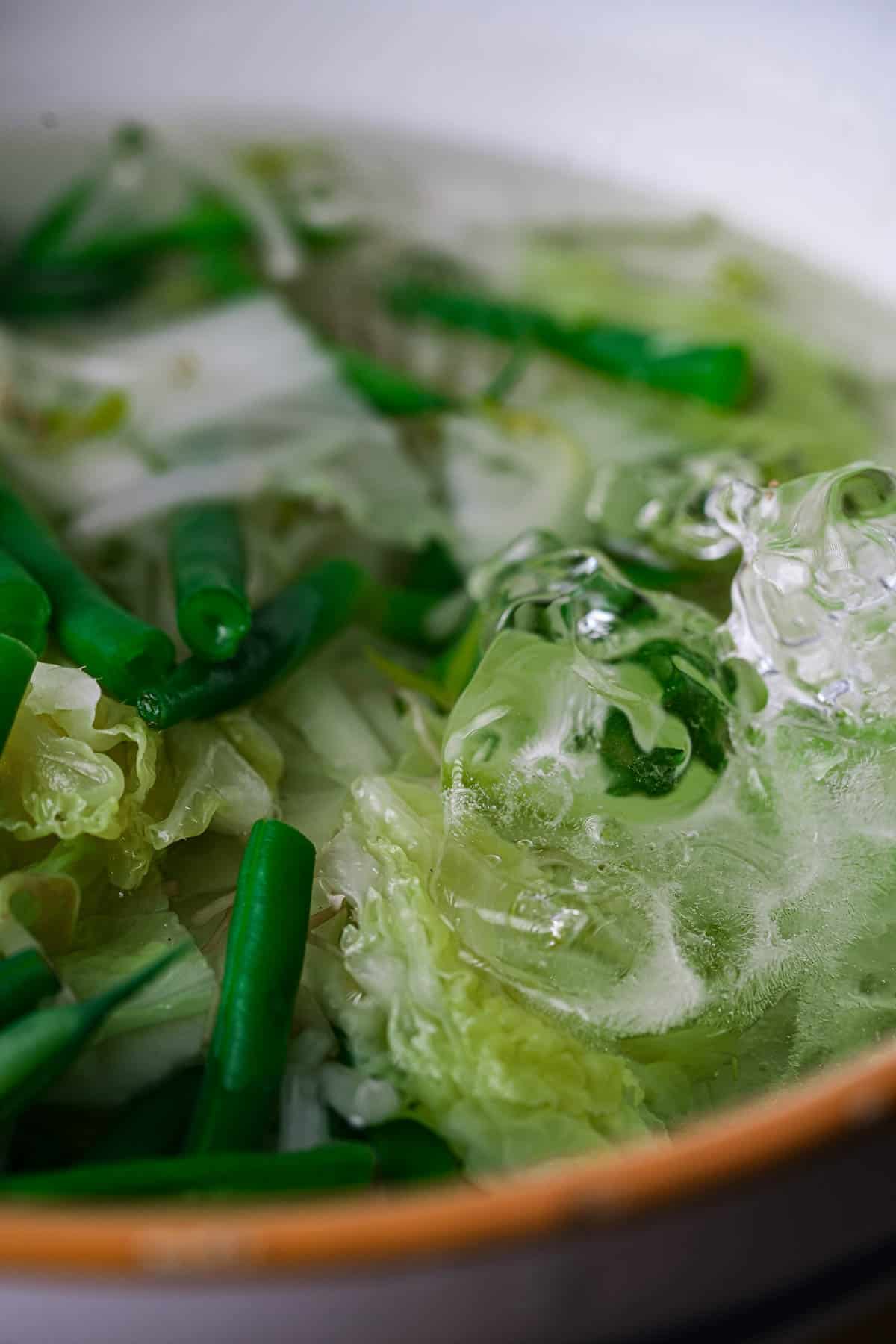
Step Five
Drain the blanched veggies in a colander. To lock in their colors and textures, immediately transfer them to a bowl of ice water. This quick chilling and shocking keeps them crisp and colorful.
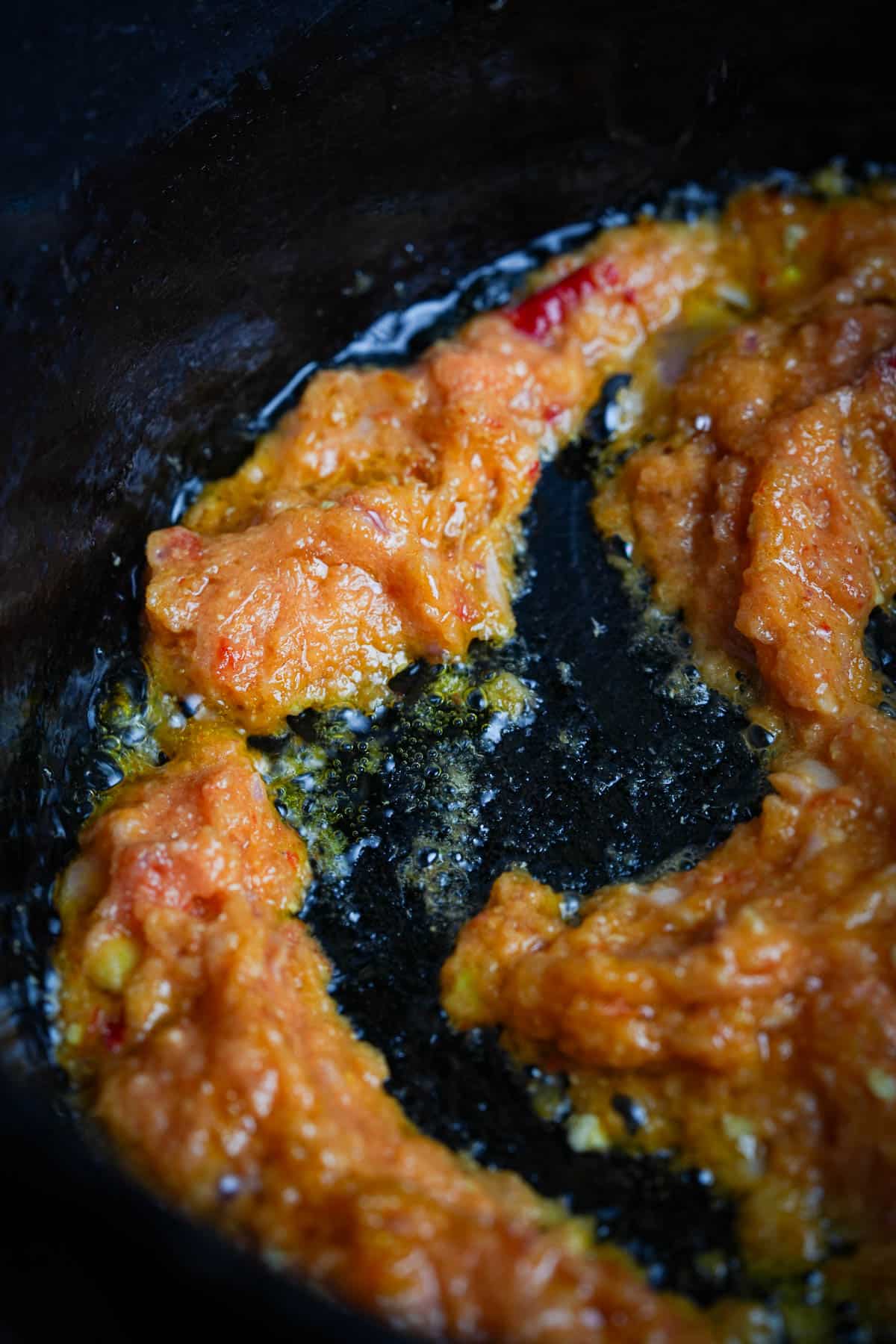
Step Six
Heat oil in a pan over medium heat for 90 seconds. Once the oil is hot, add the blended sambal and sauté for approximately 4 minutes until aromatic and slightly darkened.
If you want a little extra heat and smokiness, you can add a spoonful of nam prik pao.
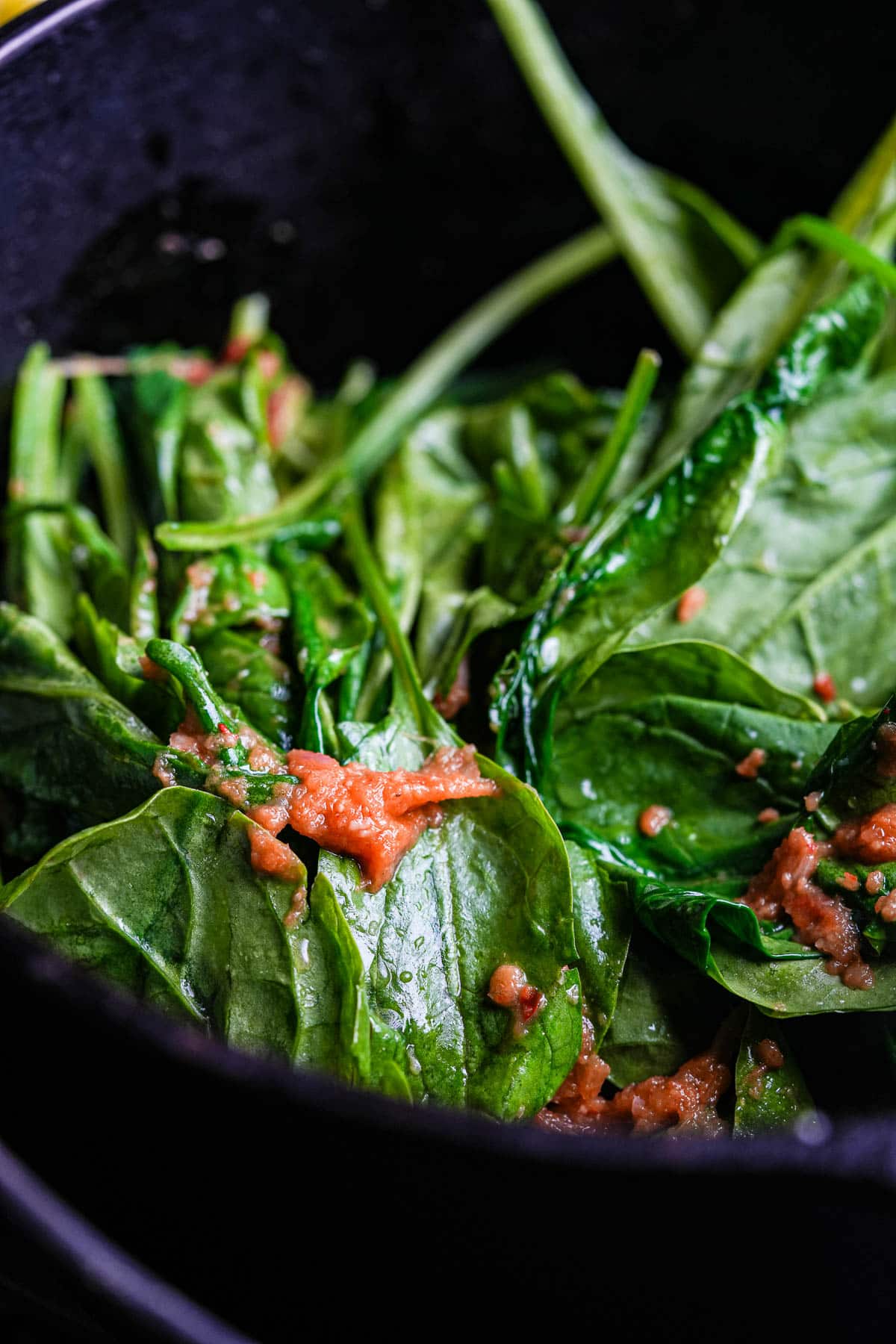
Step Seven
Add the spinach and sauté for a minute, stirring to get the sambal all over the leaves without completely wilting.
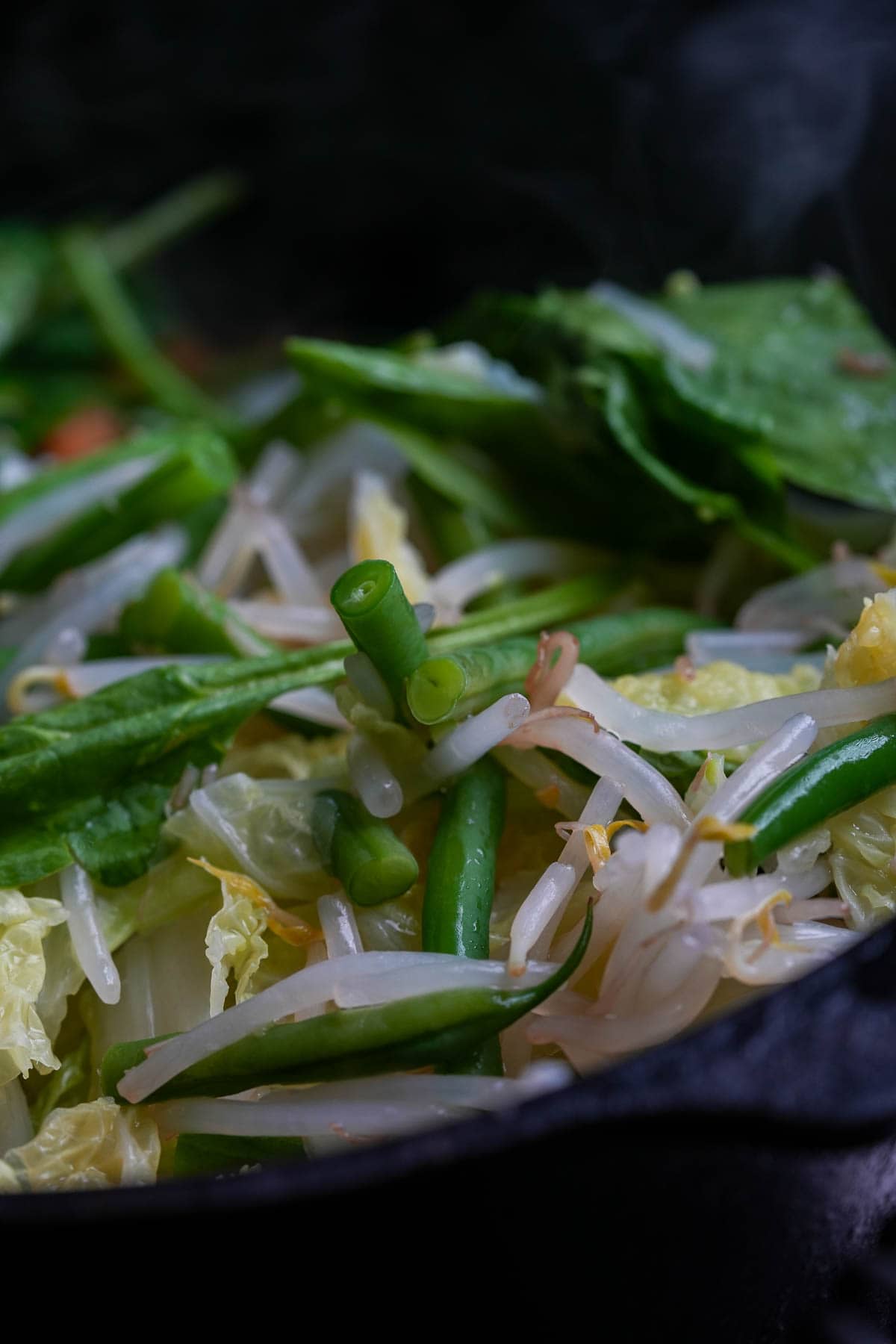
Step Eight
Thoroughly drain the blanched veggies and add them to the pan of sautéing spinach. Stir-fry for about a minute, ensuring all the veggies are warm and coated in the flavorful sambal.

Step Nine
Plate the contents of the pan in an attractive serving dish. Sprinkle the coconut topping generously over the top, and garnish with thinly sliced scallions and bird’s eye chilies. You can add more complexity and spice with a spoonful of some raw sambal like sambal matah or sambal dabu dabu.
💡What should you serve Urap Sayur with?
I mean, greens are the “meat” of a vegan diet and everything, but don’t let your veggies get lonely.
Serve this with Sayur Lodeh, a hearty Indonesian eggplant and coconut milk stew that riffs nicely with this sayur salad’s coconut vibes. Or just serve these veggies over pandan-scented Nasi Uduk, or fragrant basmati Nasi Minyak. It's also great with fried rice dishes like khao pad and tom yum fried rice.
🤔 What are you doing?!? Don’t forget dessert!
Just because you are eating your vegetables doesn’t mean you don’t deserve a little treat! Don’t hesitate to smash some Klepon filled with melted palm sugar, Martabak, banh flan, che ba mau, creamy bubur sumsum made with biji salak dumplings, bubur cha cha, or che khoai mon. Banana freaks will defenitly be down with Indonesian pisang goreng or Malaysian cekodok pisang banana donuts. I mean, ‘cause they are all vegan they are all good for you, right?
👉Top tips
When blanching the veggies, remember the key is a quick dip in boiling water followed by an immediate plunge into ice water. This blanch-and-shock method preserves their vibrant colors and crisp texture. The result: an Urap Sayur salad that’s not only visually appealing but also delightfully crunchy. It’s not like a bowl of overcooked boiled veggies you are trying to make. Think of this as a salad, like you do with asinan sayur.
When sautéing the blended sambal, wait for the oil to get hot before adding it to the pan. This ensures that the flavors infuse the oil and intensify, rather than stick and burn on the pan's surface.
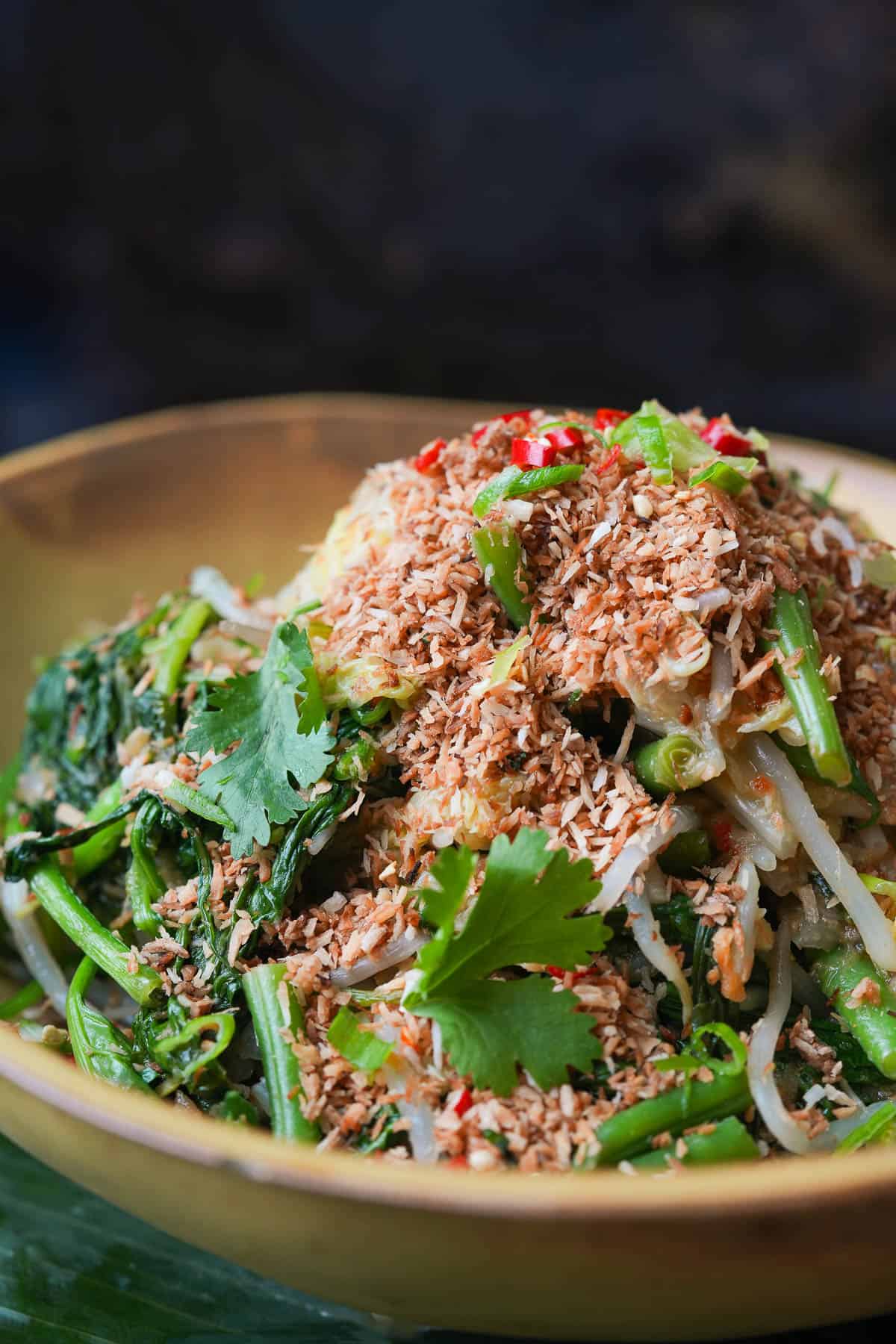
🤷♀️FAQ
Absolutely! Feel free to modify the spiciness of the sambal by adjusting the number of chilies. You can even leave out the red chili completely and use red bell peppers instead. Or wash down the slightly spicy salad with a little sweet iced bandrek!
No freaking way. Think of this as a salad. We just want to quickly blanch and shock the veggies. Frozen thawed veggies will make a sad, sad salad!
Yes, homemade Urap Sayur is naturally gluten-free and completely vegan.
Absolutely! Urap Sayur is versatile; you can switch up the vegetables based on what’s in season or available. Malabar, papaya leaves, or cassava leaves could all stand in nicely for the spinach. And Chinese broccoli, or bok choy shoots are great in this too.
🥶 Refrigeration
Keep your Urap Sayur fresh by placing it in an airtight container in the fridge. Defiantly eat it in two days tops. Note that the coconut topping should be stored separately to maintain its crunchiness as a garnish. Don’t freeze Urap Sayur.
🔥Reheating:
You can totally eat this cold or at room temperature. If you’d like to reheat it, transfer the Urap Sayur portion to a non-stick pan and add a touch of water. Warm over medium-low heat, stirring occasionally, for 5-6 minutes until heated through.
🤏 Garnish:
After reheating, add the coconut topping and fresh garnishes.
✌️My faves to serve with urap sayur:

Urap Sayur Salad (Indonesian Coconut Vegetables)
Equipment
- Colander or wire mesh strainer
- Frying pan or wok
Ingredients
Coconut topping
- ¾ cup desiccated coconut
- 6 makrut lime leaves aka kaffir lime leaves, thinly sliced
- 2 tablespoons tamarind concentrate
- ¼ teaspoon salt
Sambal
- 2 bird’s eye chilies stems removed
- 1 Fresno chili stem removed
- 1 teaspoon grated galangal
- 1 teaspoon lemongrass powder
- 2 cloves garlic peeled
- 2 shallots peeled and quartered
- 1 tablespoon lime juice
- 1 teaspoon salt
Salad
- 200 grams green beans – cut into 1-inch 2.5 cm. pieces
- 300 grams
cabbage
chopped - 150 grams
mung bean sprouts
about 2 ½ cups - 2 tablespoons olive oil or canola oil, or vegetable oil
- 300 grams bunched spinach two bunches, washed well
Garnish
- 2 scallions thinly sliced
- Bird’s eye chili thinly sliced to taste
Instructions
Coconut Topping:
- In a medium pan over medium heat, toast desiccated coconut until lightly golden and fragrant.
- Add sliced makrut lime leaves, tamarind concentrate, and salt. Continue to sauté until mostly dry. Set aside.
Sambal
- Blend bird’s eye chilies, Fresno chili, grated galangal, lemongrass powder, garlic, shallots, lime juice, and salt until smooth.
Salad
- Bring a medium pot of water to a boil over high heat. Add the green beans, and cook them for 60 seconds. Stir in the cabbage and beansprouts and cook for another 45 seconds to blanch the veggies.
- Drain the vegetables in a colander and transfer them immediately to a bowl of ice water to shock them, preserving their color and texture.
- Heat oil in a pan over medium heat. After 90 seconds, when the oil is hot, stir in the pureed sambal. Sauté for 4 minutes until the shallots soften and become very fragrant.
- Drain the blanched vegetables in a colander, and try to get them as dry as possible.
- Add the spinach to the pan with the sambal, and stir to coat the spinach in the seasonings.
- As soon as the spinach is coated in sambal, add the drained blanched vegetables to the pan. Stir fry just for about a minute until all veggies are warm and thoroughly coated in the sambal.
Assembly
- Plate the contents of the pan in an attractive serving dish and sprinkle on the coconut topping generously. Garnish if desired with thinly sliced scallions and bird’s eye chillies.
Notes

Enter your email & I'll send it to your inbox. Plus, get great new recipes from me every week!
By submitting this form, you consent to receive emails from Cinnamon Snail.

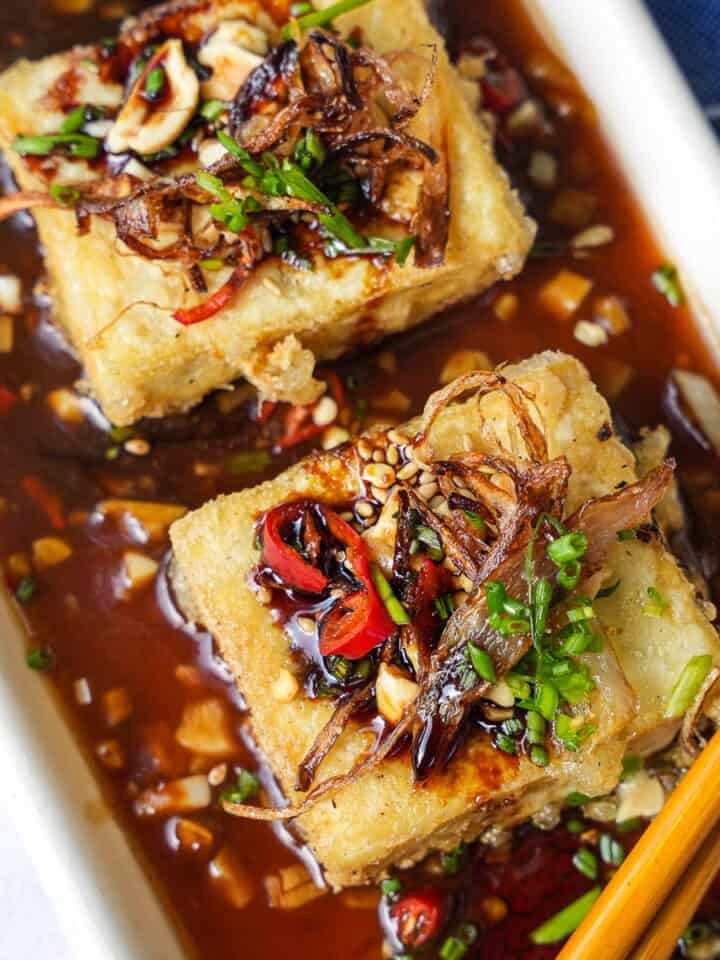
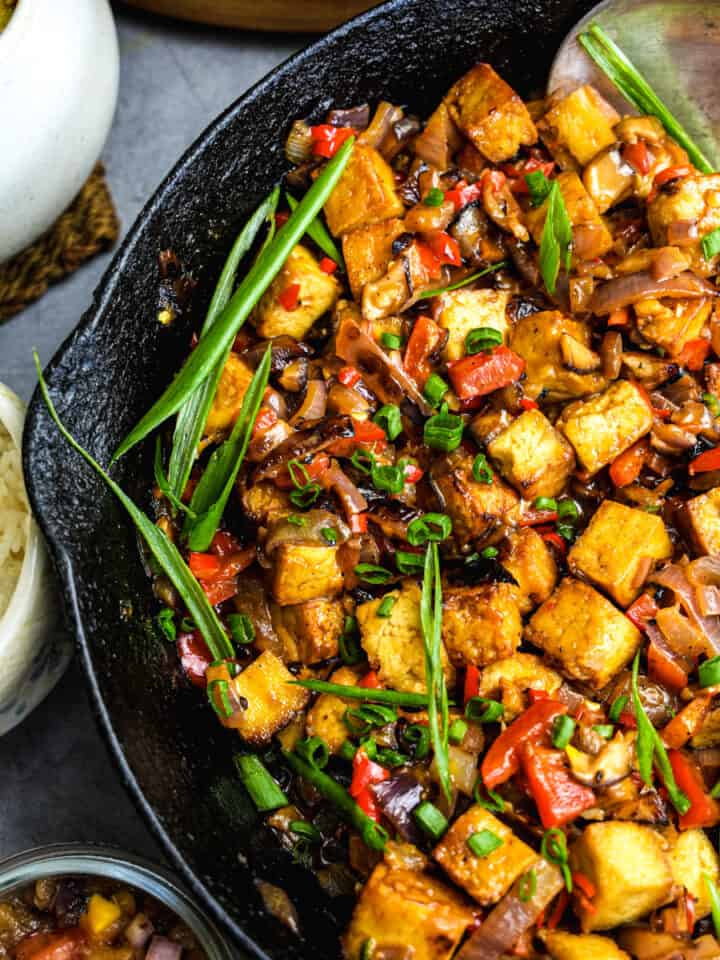
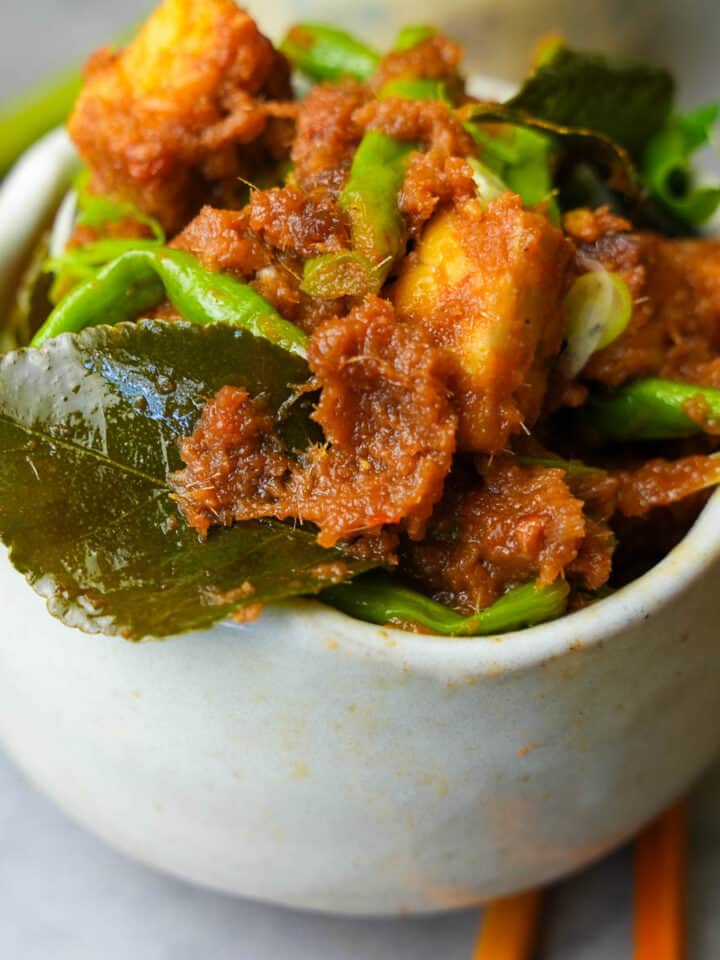






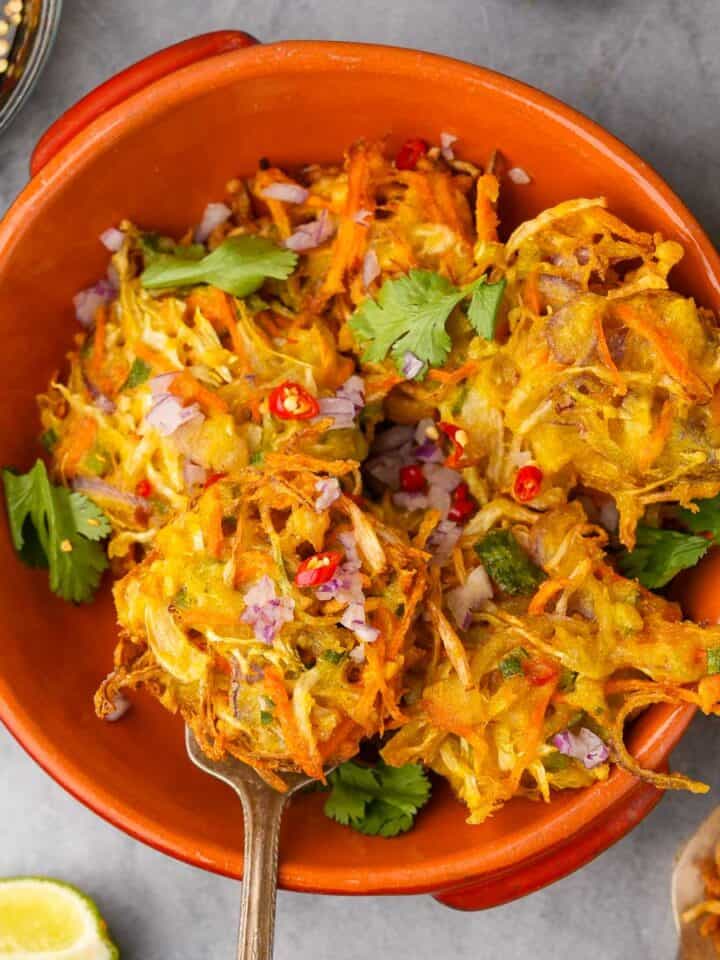
Leave a Reply